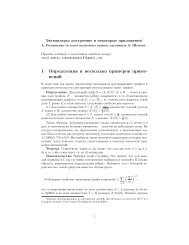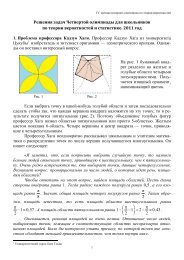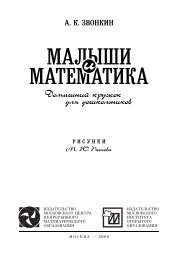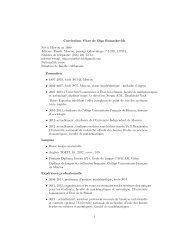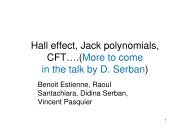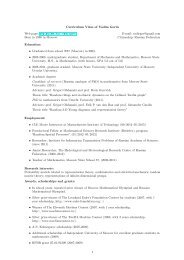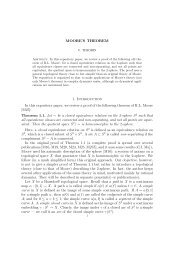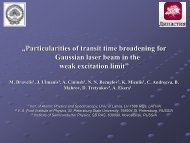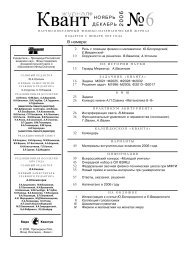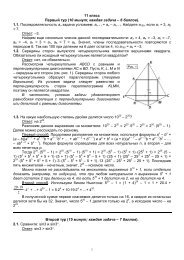a gauss-bonnet theorem, chern classes and an adjunction formula
a gauss-bonnet theorem, chern classes and an adjunction formula
a gauss-bonnet theorem, chern classes and an adjunction formula
Create successful ePaper yourself
Turn your PDF publications into a flip-book with our unique Google optimized e-Paper software.
Chapter 1<br />
Introduction <strong><strong>an</strong>d</strong> main results<br />
A Gauss-Bonnet <strong>theorem</strong> for reductive groups. The classical Gauss-Bonnet<br />
<strong>theorem</strong> states that the Euler characteristic of a compact oriented hypersurface in R n<br />
coincides up to a sign with the degree of its Gauss map. For arbitrary algebraic group<br />
<strong><strong>an</strong>d</strong> its possibly noncompact subvariety one c<strong>an</strong> also define a Gauss map using the<br />
parallel tr<strong>an</strong>sport given by the group multiplication. It is natural to ask if the degree of<br />
such Gauss map coincides with the Euler characteristic. J. Fr<strong>an</strong>ecki <strong><strong>an</strong>d</strong> M. Kapr<strong>an</strong>ov<br />
proved that it is true for complex subvarieties of the complex torus (C ∗ ) n <strong><strong>an</strong>d</strong>, more<br />
generally, for constructible sheaves on the torus. However, their result does not hold<br />
for arbitrary constructible sheaves on a noncommutative algebraic group. Kapr<strong>an</strong>ov<br />
conjectured that it is still true for constructible sheaves on reductive groups if we<br />
consider only sheaves equivari<strong>an</strong>t under the adjoint action. I proved this conjecture.<br />
The precise statement is as follows. Let G be a complex reductive group, <strong><strong>an</strong>d</strong> let<br />
F be a constructible complex of sheaves on G. For a subvariety X ⊂ G, denote by<br />
gdeg(X) the Gaussi<strong>an</strong> degree of X. It is is equal to the number of zeros of a generic<br />
left-invari<strong>an</strong>t differential 1-form on G restricted to X. It is easy to show that the<br />
Gaussi<strong>an</strong> degree is well-defined [7, 8]. E.g. the Gaussi<strong>an</strong> degree of a hypersurface is<br />
equal to the degree of its Gauss map.<br />
1




